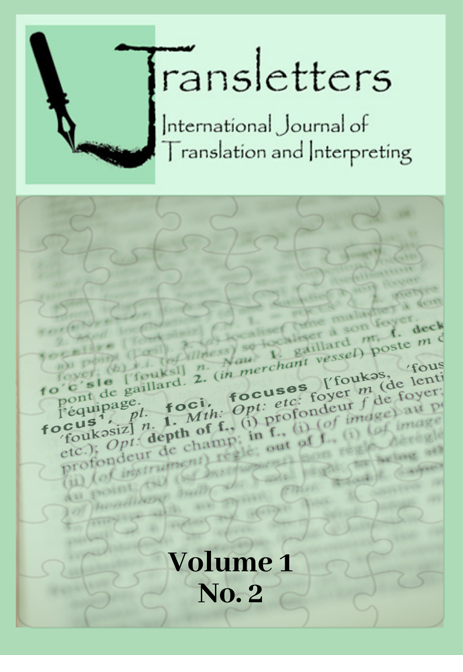Subtitling Harry Potter’s Fantastic World: Linguistic and Cultural Transfer from Britain to China in a Subtitled Children’s Film
Contenido principal del artículo
Resumen
This paper aims to explore the way in which Harry Potter’s made-upness is subtitled for a contemporary Chinese audience. It will specifically underline how the official Chinese subtitles[1] mediate the cultural specificities which characterise the transnational world of Harry Potter. Jerry Griswold’s (2006, 1-2) findings on children’s literature that key characteristics including “scariness, smallness, flying, aliveness” serve compellingly to the majority of the children will be applied to the categorisation of the representative instances in this case analysis. ‘Magic’, as an extension of Griswold’s category of ‘aliveness’, will be also considered to analyse the quintessential cultural transfer between Britain and China. The paper will be concluded by the fact that a high level of creativity is required from the subtitler to bridge the considerable linguistic and cultural gap between both countries in relation to the subtitling process of witchcraft and wizardry in Harry Potter and the Sorcerer’s Stone (2001).
[1] Different from the fansubbing, the official subtitles offer a stable body of work. They also underline an extra layer of cultural intervention in keeping with André Lefevere's (2002, 14) writing on the cultural institutions which shape the process of translation because the subtitles in question have not only been filtered through the Chinese translator's perspective, they have also been mediated by the government office which oversees the films chosen for subtitling and the way in which they are subtitled.
Descargas
Detalles del artículo
Proposed Policy for Journals That Offer Open Access
Authors who publish with this journal agree to the following terms:
- Authors retain copyright and grant the journal right of first publication with the work simultaneously licensed under a Creative Commons Attribution License that allows others to share the work with an acknowledgement of the work's authorship and initial publication in this journal.
- Authors are able to enter into separate, additional contractual arrangements for the non-exclusive distribution of the journal's published version of the work (e.g., post it to an institutional repository or publish it in a book), with an acknowledgement of its initial publication in this journal.
- Authors are permitted and encouraged to post their work online (e.g., in institutional repositories or on their website) prior to and during the submission process, as it can lead to productive exchanges, as well as earlier and greater citation of published work (See The Effect of Open Access).

